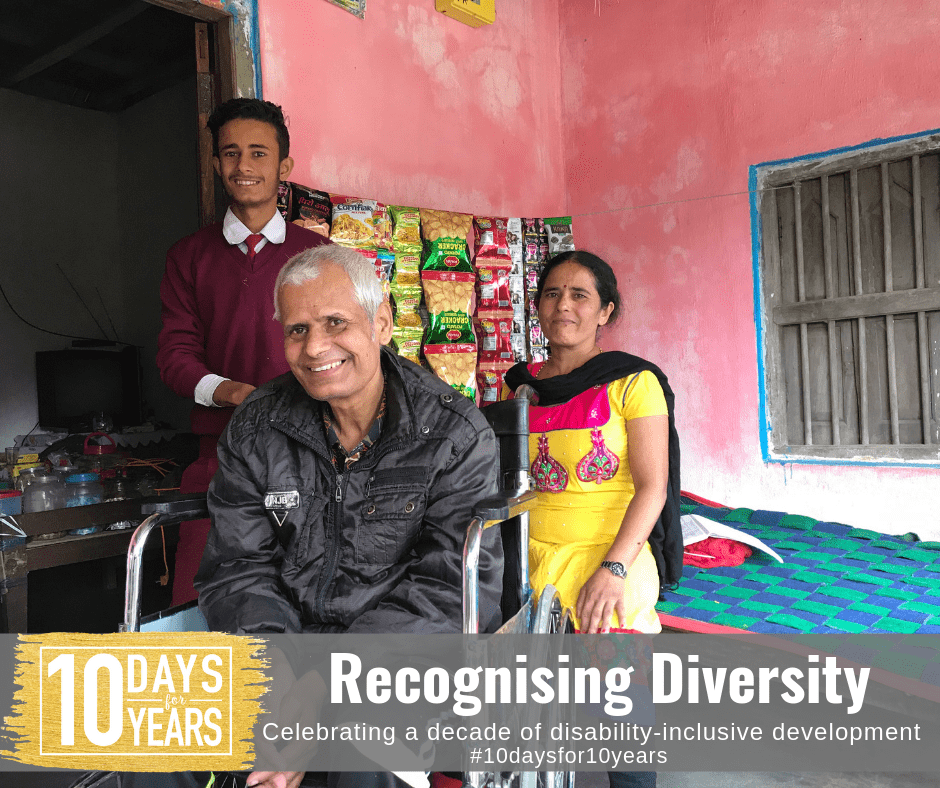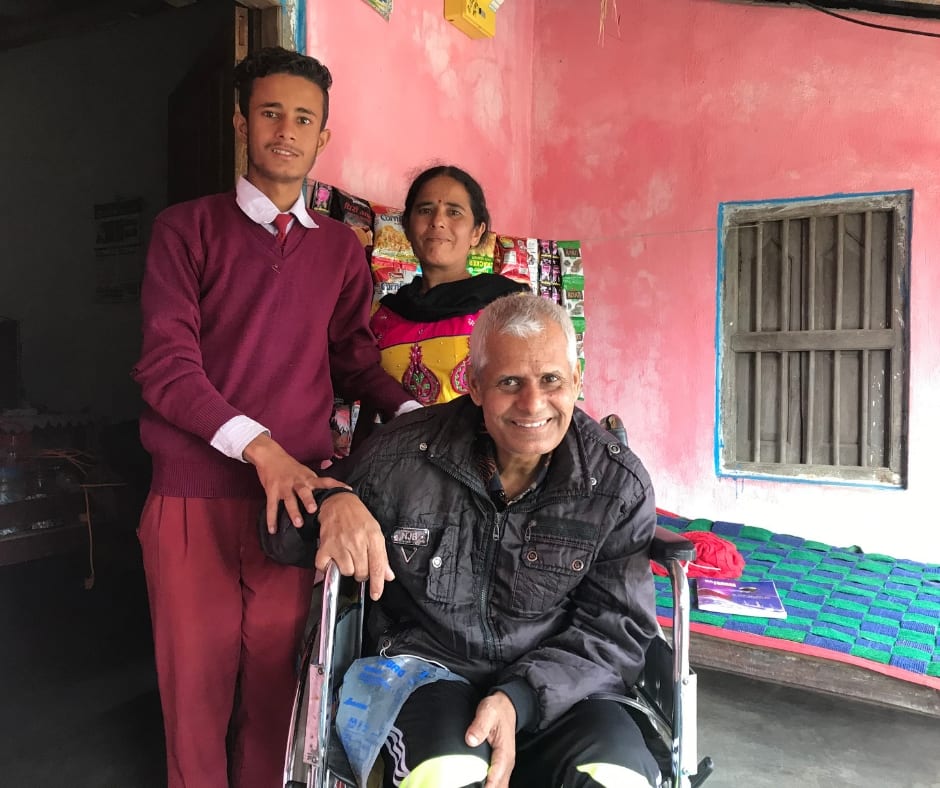Recognising diversity within disability: the inclusion of people with intellectual and psychosocial disabilities
People with disabilities are as diverse as any other community: they are people of many ages, many origins, many genders, many faiths, and many identities. They are also people with a wide range of experiences of disability, some more widely recognised than others.
As much is reflected in DFAT’s Development for All strategies for disability-inclusive development. The first, coming into effect in 2009, noted that ‘the lived experiences and perspectives of people with disability are diverse, and… better understanding of the lived experience of people with disability will help break down the attitudes that create and reinforce disability, and build respect for diversity.’[1] The subsequent strategy, commencing in 2015, went a step further by recognising that ‘some groups within the disability community are at heightened risk of marginalisation, particularly those with psychosocial and intellectual disabilities’.[2]
The strategy commits to bringing greater attention to people with psychosocial and intellectual disabilities through increased recognition and participation, and promoting awareness to reduce stigma.
This focus is much-needed. In many parts of Asia and the Pacific, people with intellectual disabilities are excluded from census data and community life; children with intellectual disabilities are less likely to receive vaccinations or access other health interventions; and women and girls with intellectual disabilities are at significantly higher risk of sexual violence.[3]
For people with psychosocial disabilities—defined as people with ongoing mental health issues which, in interaction with various barriers, may hinder their full and effective participation in society on an equal basis with others—stigma can underpin extreme exclusion, even among other people with disabilities.
People with psychosocial disabilities face high rates of institutional violence and are frequently stripped of their political rights.[4]
Despite this, many disabled people’s organisations (DPOs) choose not to represent them.
In Nepal, research led by TEAR Australia with funding from the Australian aid program revealed that people with psychosocial disabilities experienced heightened barriers to inclusion. These ranged from social distance and stigma, to insufficient access to treatment, to economic stress, to an overall decreased sense of wellbeing in individuals and the household.[5]
By partnering with Nepal’s Centre for Mental Health and Counselling (CMC), TEAR Australia are also working to provide life-changing services for people with psychosocial disabilities. Recently, Govinder and Devi—a married couple with lived experience of psychosocial disability and mental illness—joined the Bahuni mental health self-help group, established by the CMC. Like many of the CMC’s other projects, self-help groups aim to promote inclusion and collective action for people with psychosocial disabilities; facilitate community-based activities; improve access to treatments and rehabilitation services; and promote wider community action to ensure broad acceptance and reduction of stigma.
Through the Bahuni self-help group, Govinder and Devi have developed deeper knowledge and support to access treatment and have received a grant to start a small shop from their home. The group has also been a comfort and support to them as they realise that other people and households are experiencing psychosocial disability, but collectively they can participate in the community and work towards a more inclusive society. Being part of the group and operating the shop has enabled Govinder and Devi to feel like they are a stronger part of their community, despite the barriers they face.
In Govinder’s own words: ‘my state of mind has changed now that I have the shop, I feel much more positive now!’
All people with disabilities have experiences of barriers, and experiences of being left behind. Even within dedicated approaches to disability-inclusive development, a failure to examine who is being left behind, and why, risks the achievement of sustainable development outcomes for all. The attention to diversity and inclusion, particularly for marginalised people with intellectual and psychosocial disabilities, in the Development for All strategies is to be commended – and must be continued in future strategies to ensure that Australian aid continues to support people like Govinder and Devi.
Caption: Govinda with his wife Devi and son Praveen. Praveen shares, ‘My father has a more positive attitude since starting the shop. He has a purpose now.’ Devi added, ‘I’m feeling happy that people come to buy from our shop. Now that Govinder has interaction with people he is not so bored and feels more connected and accepted by the community.’ Image copyright: TEAR Australia
Information and photos used in partnership with TEAR Australia.
References
[1] Australian Agency for International Development, 2008. Development for All: Towards a disability-inclusive Australian aid program 2009-2014. AusAID, Canberra. p. 11.
[2] Department of Foreign Affairs and Trade, 2015. Development for All 2015-2020: Strategy for strengthening disability-inclusive development in Australia’s aid program. DFAT, Canberra. p. 11.
[3] CBM Australia, 2017. Leave No One Behind: Including All People with Disabilities in the 2030 Agenda for Sustainable Development. p. 8-9.
[4] CBM Australia, 2017. p. 11.
[5] TEAR Australia, 2018. Photovoice Study on Barriers & Enablers to Inclusion: Final Report. TEAR Australia, Blackburn. p. 4.
Sign up to receive the daily campaign article:
By signing up you will receive a daily email from the 10 days for 10 years campaign between 29 April to 10 May 2019.
10 days for 10 years
In partnership with CBM Australia and other ADDC partner organisations, the 10 days for 10 years campaign runs from 29 April to 10 May 2019. The campaign is celebrating the achievements in disability-inclusive development (DID) within the Australian aid sector, particularly those led or made possible by Australian aid under the first and second Development for All strategies. Articles will be released daily here on the ADDC website.
Follow the campaign via the hashtag #10daysfor10years and follow @ADDCnews on Twitter, Facebook and LinkedIn.
- 10 days for 10 years
- Day 1 – A Legacy of Leadership
- Day 2 – Beyond the Mainstream
- Day 3 – Inclusion at the Intersection
- Day 4 – Disabled People’s Organisations Leading Change
- Day 5 – Recognising Diversity within Disability
- Day 6 – Reporting from the Shadows
- Day 7 – Volunteering for Inclusion
- Day 8 – Evolution of Inclusion
- Day 9 – Education for All
- Day 10 – Building on Success


